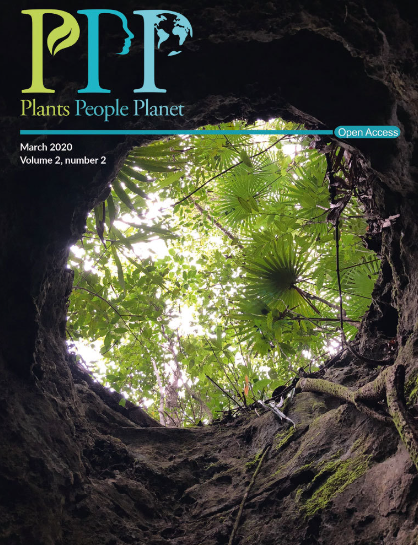棉籽的营养和工业意义及棉酚脱毒的遗传技术
IF 3.6
2区 环境科学与生态学
Q1 BIODIVERSITY CONSERVATION
引用次数: 1
摘要
棉酚及其衍生物是一类有毒的免疫抑制化合物,是在棉籽中自然合成的。这些化合物对人类和动物造成若干健康危害,如心肺损伤、呼吸困难和猪死亡。在家禽中,棉酚会减少产蛋量并减缓生长。研究还表明,棉酚可以通过食物链间接危害人类和动物。虽然在食品和饲料加工前采用了几种物理和化学方法来降低棉籽中的棉酚含量,但这些技术都很昂贵。因此,对棉花中的棉酚生产进行基因调控可以提供一种更便宜的选择。棉花(Gossypium spp.)是最重要的纤维作物,一百多个国家都在种植棉花,为不断发展的纺织工业提供原料。脱色后获得的棉花种子是丰富的蛋白质来源,具有巨大的石油和饲料生产潜力。棉籽油产量估计为508万吨,预计到2029年将产生超过65.6亿美元的收入。脱脂棉籽饼用作动物饲料和食品补充剂。然而,棉籽中棉酚的污染限制了其使用。棉酚摄入会损害体重增加,并导致厌食症、呼吸窘迫和在极端暴露下死亡。本文综述了棉籽油和棉籽粕的研究意义;棉酚的药理作用和影响;棉酚的化学、毒性和生物活性;以及饲料和食品添加剂加工过程中棉酚去除的物理和化学方法。此外,本文还讨论了棉酚的生物合成途径,并尝试对该途径的一些关键调控因子进行遗传改造,以生产无腺体棉籽或降低棉籽中的棉酚水平。本文章由计算机程序翻译,如有差异,请以英文原文为准。
The nutritional and industrial significance of cottonseeds and genetic techniques in gossypol detoxification
Societal Impact Statement Gossypol and its derivatives represent a class of toxic and immunosuppressive compounds that are naturally synthesized in cottonseed. These compounds pose several health hazards to humans and animals, such as heart and lung damage, breathing difficulties, and death in swine. In poultry, gossypol reduces egg production and slows growth. Studies have also shown that gossypol can indirectly harm humans and animals through the food chain. Although several physical and chemical approaches are adopted to reduce gossypol levels in cottonseed before food and feed processing, these techniques are expensive. Therefore, genetically regulating gossypol production in cotton could provide a cheaper alternative. Summary Cotton ( Gossypium spp.), the most important fiber crop, is cultivated in over a hundred countries to provide raw materials for the growing textile industry. The seed obtained after delinting cotton is a rich source of protein with a vast potential for oil and feed production. Cottonseed oil production is estimated at 5.08 million metric tons and is expected to generate over 6.56 billion United States Dollars in revenue by 2029. The cake from defatted cottonseed is used as animal feed and food supplements. However, the contamination of gossypol in cottonseed limits its use. Gossypol ingestion impairs weight gain and causes anorexia, respiratory distress, and death under extreme exposure. This review highlights the significance of cottonseed oil and meal; the pharmacological uses and impact of gossypol; the chemistry, toxicity, and bioactivity of gossypol; and the physical and chemical methods used in gossypol removal during feed and food supplement processing. In addition, the biosynthetic pathway of gossypol and attempts to genetically transform some key regulators of this pathway to produce glandless cottonseed or reduce the gossypol levels in the seed are discussed.
求助全文
通过发布文献求助,成功后即可免费获取论文全文。
去求助
来源期刊

Plants People Planet
Multiple-
CiteScore
9.90
自引率
5.90%
发文量
81
审稿时长
12 weeks
期刊介绍:
Plants, People, Planet aims to publish outstanding research across the plant sciences, placing it firmly within the context of its wider relevance to people, society and the planet. We encourage scientists to consider carefully the potential impact of their research on people’s daily lives, on society, and on the world in which we live. We welcome submissions from all areas of plant sciences, from ecosystem studies to molecular genetics, and particularly encourage interdisciplinary studies, for instance within the social and medical sciences and chemistry and engineering.
 求助内容:
求助内容: 应助结果提醒方式:
应助结果提醒方式:


